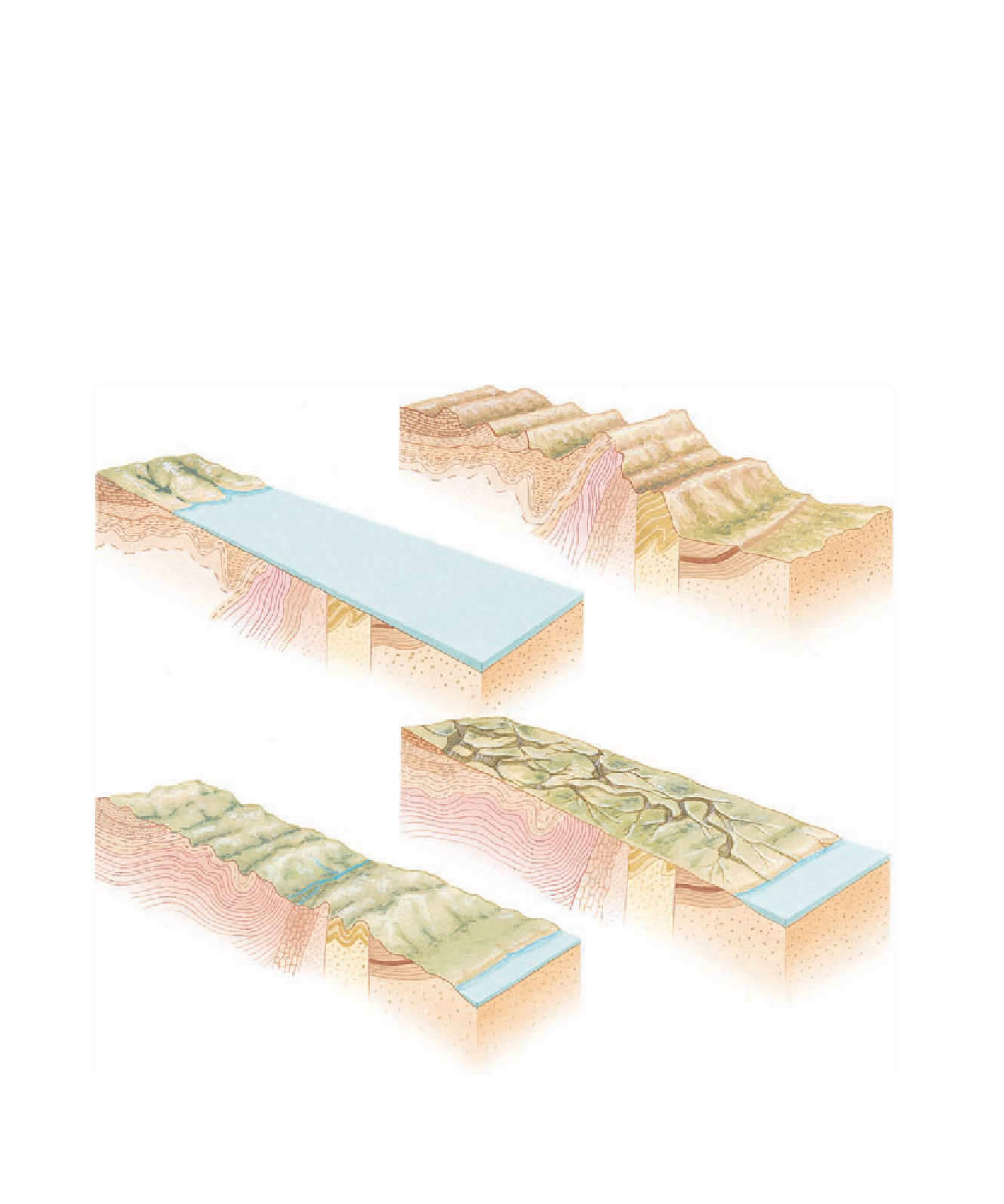Geology Reference
In-Depth Information
is an eroded laccolith. Another prominent volcanic feature is
Shiprock in New Mexico, a volcanic neck that dates from the
Late Oligocene.
Pleistocene glacial deposits are present in the northern
part of the Central Lowlands, as well as in the northern Great
Plains; however, during most of the Cenozoic Era, nearly all
of the Central Lowlands was an area of active erosion rather
than deposition.
a plain across which streams fl owed eastward to the ocean.
The present distinctive aspect of the Appalachian Moun-
tains developed as a result of Cenozoic uplift and erosion
(
Figure 23.11). As uplift proceeded, upturned resistant
rocks formed northeast-southwest trending ridges with in-
tervening valleys eroding into less resistant rocks. The pre-
existing streams eroded downward while uplift took place,
were superposed on resistant rocks, and cut large canyons
across the ridges, forming
water gaps
, deep passes through
which streams fl ow, and
wind gaps,
which are water gaps no
longer containing streams.
Erosion surfaces at different elevations in the Appala-
chians are a source of continuing debate among geologists.
Some are convinced that these more or less planar surfaces
show evidence of uplift followed by extensive erosion and
then renewed uplift and another cycle of erosion. Others
◗
Mountains
The Applachian Mountain region has a history of deforma-
tion during the Proterozoic and Paleozoic, and during the
Mesozoic, the region experienced block-faulting. By the end
of the Mesozoic, though, the mountains had been eroded to
Late Triassic
Cretaceous
Cenozoic
Recent
◗
Figure 23.11
Evolution of the Present Topography of the Appalachian Mountains Although these
mountains have a long history, their present topographic expression resulted mainly from Cenozoic
uplift and erosion.

Search WWH ::

Custom Search